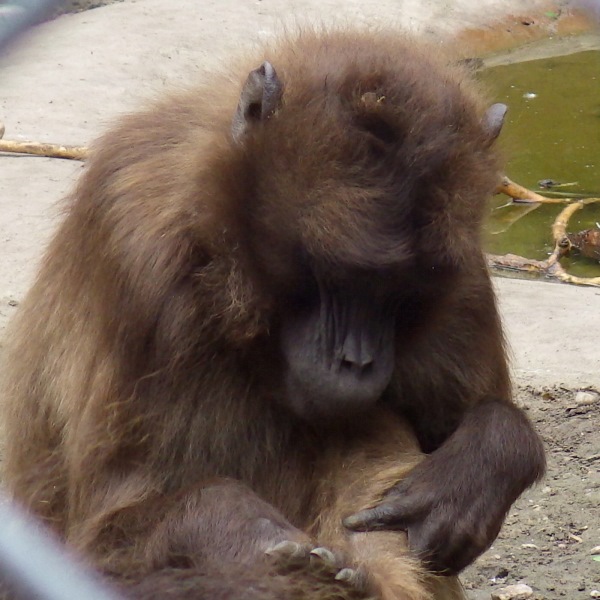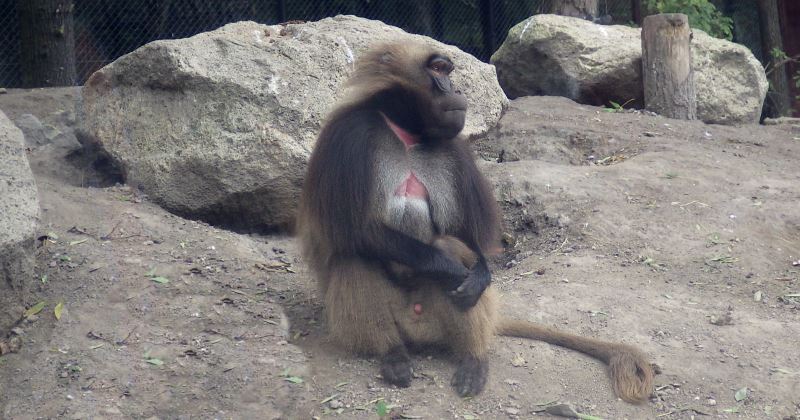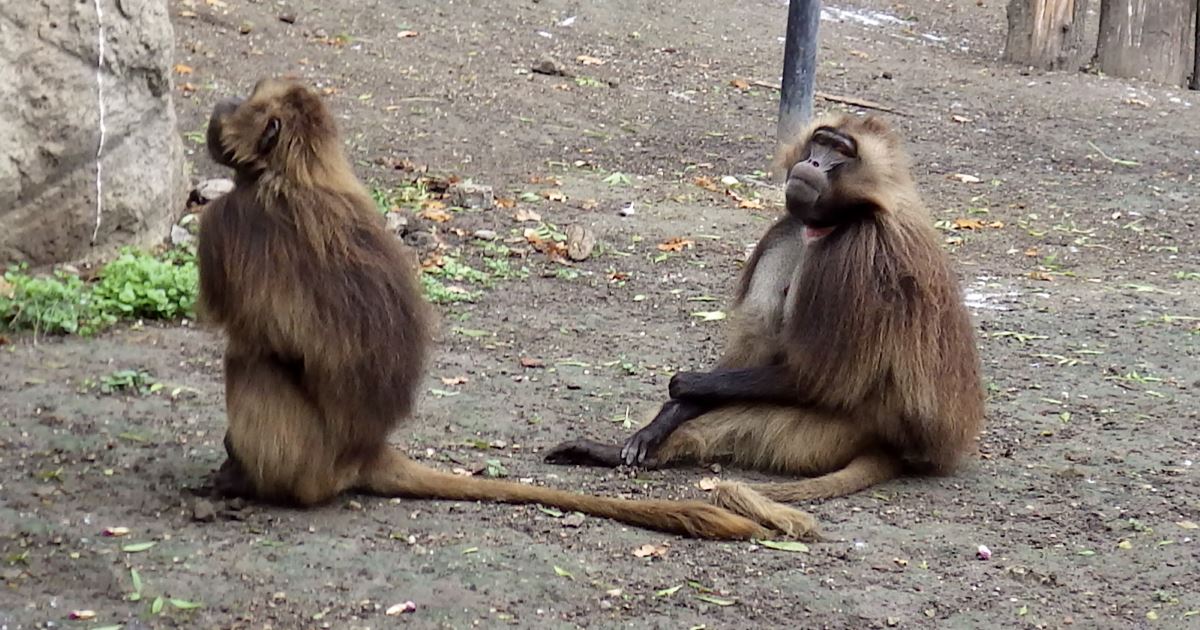The Gelada, also known as the gelada baboon is an old world monkey from Ethiopia.

Gelada baboon (Theropithecus gelada), Szeged Zoo.
I took these pictures in the Szeged Zoo where geladas share a relatively large area with the various species of African vultures.
Unusual for a primate, geladas mostly eat grass.

Geladas are also called bleeding-heart baboons because unlike most of their relatives they display signs of fertility on their chests, not on their butts.
Geladas do tend to sit a lot which hides their behinds. As a result, unlike most monkeys that show signs of fertility by becoming pink on their butts, geladas become pink on their chests when they are ready to mate — probably explains why one of their common names is the bleeding-heart baboon.

Geladas communicate with each other using complex vocalization, some claim that this might be close in complexity to human language.

Further Readings:
Gelada (Theropithecus gelada) on ARKIVE.
Gelada Baboon (Theropithecus gelada).
Ethiopia’s Exotic Monkeys.
Unraveling the mystery of gelada monkey melodies on petridish.org.
Gelada on Wikipedia.



